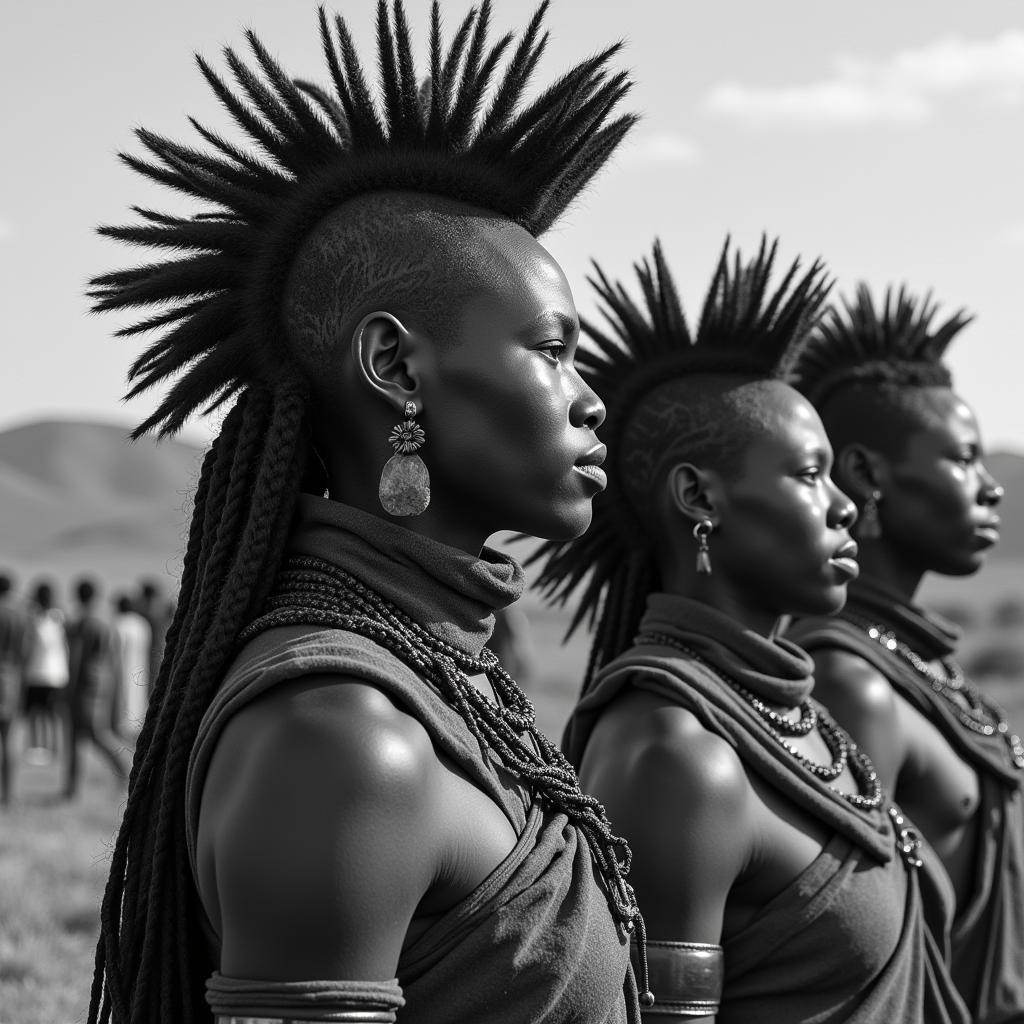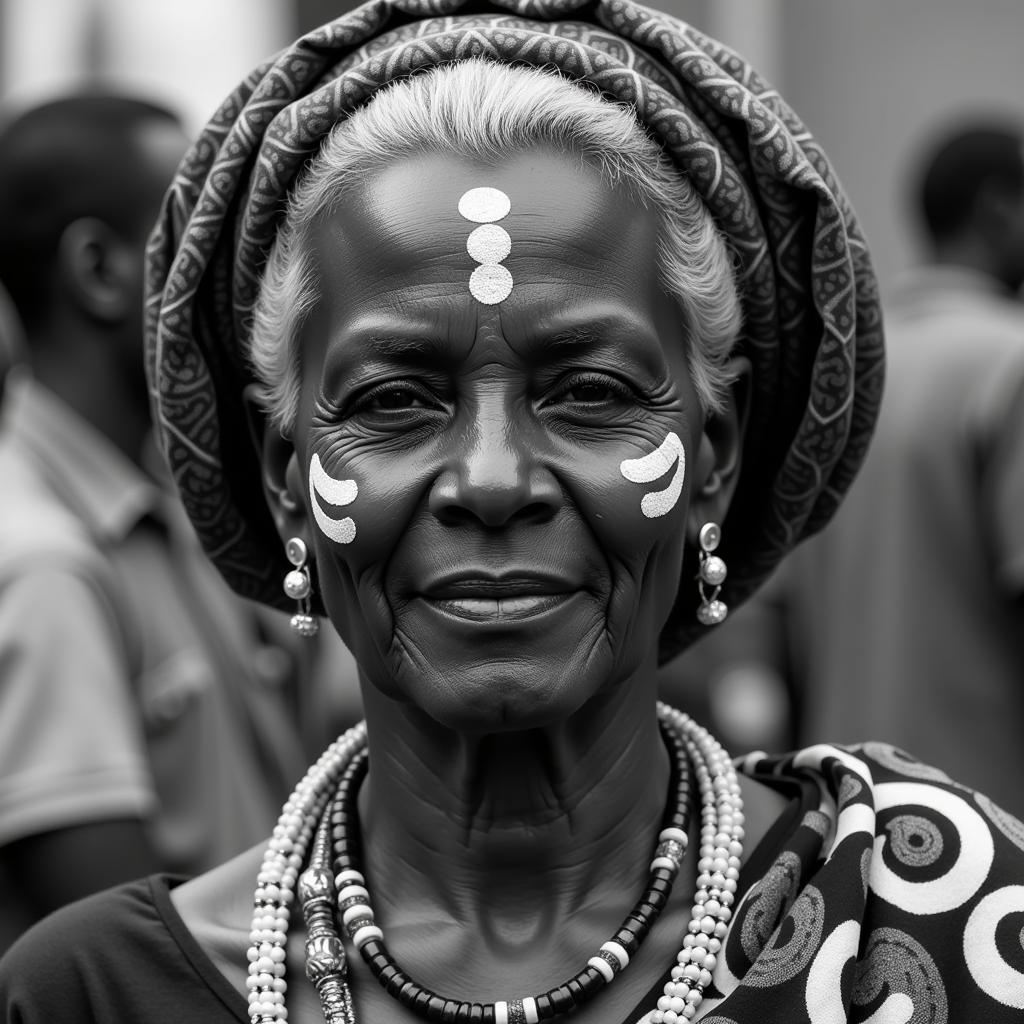Unveiling the Beauty and History of African Lace Designs
African Lace Designs are renowned worldwide for their intricate patterns, vibrant colors, and rich cultural significance. These exquisite textiles, often hand-crafted with meticulous detail, are more than just fabric; they are a testament to Africa’s rich history, artistic prowess, and cultural diversity.
A Tapestry of Tradition: The Origins of African Lace
The origins of lace can be traced back to 16th century Europe, but Africa has embraced this textile art form and infused it with its own unique cultural identity. While the exact arrival of lace in Africa is debated, it’s widely believed that European traders and colonial influences introduced it to the continent during the 16th and 17th centuries. Notably, countries like Nigeria and Ghana have developed strong traditions of lace making and trade, shaping it into a quintessential element of African attire.
More Than Just Fabric: The Cultural Significance of Lace
In many African cultures, lace is not merely a decorative element but a powerful symbol of status, wealth, and tradition. It plays a pivotal role in significant life events, from weddings and chieftaincy ceremonies to religious festivals and celebrations. The choice of lace, its color, and pattern often convey deeper meanings related to family lineage, social standing, and cultural heritage. For instance, in some cultures, specific colors or patterns are reserved for royalty or signify stages of life.
A Fusion of Styles: Exploring Different African Lace Designs
African lace designs are as diverse as the continent itself. Each region boasts its unique styles, patterns, and techniques, reflecting local traditions and influences. Let’s delve into some prominent types:
Aso Oke:
This hand-woven fabric from Nigeria is characterized by its intricate geometric patterns and vibrant colors. It is often used for special occasions and holds deep cultural significance within Yoruba tradition.
Kente Cloth:
Originating from Ghana, Kente cloth is instantly recognizable by its bold colors and geometric designs. Each pattern carries symbolic meaning, often representing proverbs, historical events, or social status.
Vlisco:
This Dutch wax print fabric, while not technically lace, has been deeply integrated into African fashion. Its vibrant, often floral, patterns have become synonymous with West African style.
The Modern Evolution: African Lace in Contemporary Fashion
African lace designs have transcended geographical boundaries and captivated the global fashion scene. Designers around the world are incorporating these exquisite textiles into their collections, blending traditional aesthetics with modern silhouettes. From haute couture gowns to ready-to-wear pieces, African lace adds a touch of elegance, cultural richness, and unique flair.
Frequently Asked Questions About African Lace Designs:
1. How is African lace made?
African lace can be crafted through various methods, including hand-weaving, machine-made production, and a combination of both. Traditional techniques often involve meticulous hand-looming or intricate needlework.
2. What are the common colors used in African lace?
African lace embraces a vibrant color palette. While colors can vary based on cultural significance and personal preference, common choices include bold hues like royal blue, emerald green, deep reds, vibrant yellows, and rich golds.
3. How do I care for African lace garments?
Proper care is essential for preserving the beauty of African lace. Handwashing with mild detergent is generally recommended. Avoid harsh chemicals and direct sunlight, and allow the fabric to air dry.
4. Can I find authentic African lace online?
Yes, numerous online retailers specialize in authentic African fabrics, including lace. It’s crucial to research reputable sellers to ensure quality and ethical sourcing.
5. What are some contemporary ways to style African lace?
African lace seamlessly blends tradition and modernity. Explore pairing lace skirts with simple tops, incorporating lace panels into dresses, or adding a touch of elegance with lace accessories.
Explore More About African Culture:
Interested in discovering more about the richness of African culture? Check out these related articles:
From its historical roots to its modern interpretations, African lace continues to captivate the world with its beauty, craftsmanship, and cultural depth. It’s a textile that tells a story, embodies tradition, and inspires creativity, reflecting the vibrant spirit of Africa itself.
Need Help? Contact Us!
Do you have any more questions about African lace designs or need help finding the perfect outfit? Contact us! Our team is available 24/7 to assist you.
Phone: +255768904061
Email: kaka.mag@gmail.com
Address: Mbarali DC Mawindi, Kangaga, Tanzania
We are passionate about sharing the beauty of African culture with the world.



